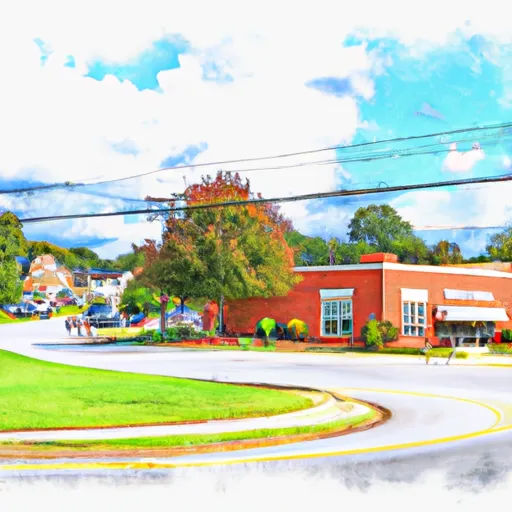-
 Snoflo Premium
Snoflo Premium
Get unlimited access to all our content
With no Ad interruptions! - Start Your Free Trial Login with existing account
Millstone
Eden Index
Climate
8.2
•
Recreation
2.8
•
Community
1.6
•
Safeguard
4.7/10

Millstone, Kentucky is a small town nestled in the eastern part of the state. The climate in Millstone is characterized as humid subtropical, with hot and humid summers and mild winters. Summers often see temperatures reaching the high 80s to low 90s Fahrenheit, while winters are relatively mild, with average temperatures in the mid-30s to mid-40s.
Millstone is located near the headwaters of the Kentucky River, making water a significant aspect of the area's hydrology. The river serves as an important source of drinking water and provides opportunities for recreational activities, such as fishing, boating, and kayaking. The surrounding landscape is also dotted with streams and small lakes, offering additional water-based outdoor recreation options.
In terms of outdoor recreation, Millstone and its surrounding areas boast numerous opportunities for nature enthusiasts. The region is home to several state parks and national forests, providing ample opportunities for hiking, camping, and wildlife spotting. The picturesque mountains and lush forests also make Millstone an ideal destination for birdwatching and photography. Additionally, the town hosts various festivals and events throughout the year, celebrating the local culture, music, and outdoor activities.
What is the Eden Index?
The Snoflo Eden Index serves as a comprehensive rating system for regions, evaluating their desirability through a holistic assessment of climate health, outdoor recreation opportunities, and natural disaster risk, acknowledging the profound impact of these factors on livability and well-being.
Climate Health Indicator (CHI): 8.2
Millstone receives approximately
1167mm of rain per year,
with humidity levels near 81%
and air temperatures averaging around
13°C.
Millstone has a plant hardyness factor of
6, meaning
plants and agriculture in this region thrive during a short period during spring and early summer. Most
plants will die off during the colder winter months.
By considering the ideal temperature range, reliable water supplies, clean air, and stable seasonal rain or snowpacks, the Climate Health Indicator (CHI) underscores the significance of a healthy climate as the foundation for quality living.
A healthy climate is paramount for ensuring a high quality of life and livability in a region, fostering both physical well-being and environmental harmony. This can be characterized by ideal temperatures, reliable access to water supplies, clean air, and consistent seasonal rain or snowpacks.
Weather Forecast
Streamflow Conditions
Kentucky
Area Rivers
Kentucky
Snowpack Depths
Kentucky
Reservoir Storage Capacity
Kentucky
Groundwater Levels
Recreational Opportunity Index (ROI): 2.8
The Recreational Opportunity Index (ROI) recognizes the value of outdoor recreational options, such as parks, hiking trails, camping sites, and fishing spots, while acknowledging that climate plays a pivotal role in ensuring the comfort and consistency of these experiences.
Access to outdoor recreational opportunities, encompassing activities such as parks, hiking, camping, and fishing, is crucial for overall well-being, and the climate plays a pivotal role in enabling and enhancing these experiences, ensuring that individuals can engage in nature-based activities comfortably and consistently.
Camping Areas
| Campground | Campsites | Reservations | Toilets | Showers | Elevation |
|---|---|---|---|---|---|
| Old Forge | 15 | 2,154 ft | |||
| High Knob | 77 | 3,608 ft | |||
| Houston Valley | None | 1,843 ft | |||
| Natural Tunnel State Park | None | 1,703 ft | |||
| Rocky Bluff | 30 | 1,753 ft | |||
| Davy Crockett Birthplace | 88 | 1,392 ft | |||
| Paint Creek | 21 | 1,750 ft | |||
| Lake Powhatan | 97 | 2,196 ft | |||
| Horse Creek Rec Area | 34 | 1,759 ft | |||
| Kinser Park | None | 1,314 ft |
Nearby Ski Areas
Catastrophe Safeguard Index (CSI):
The Catastrophe Safeguard Index (CSI) recognizes that natural disaster risk, encompassing floods, fires, hurricanes, and tornadoes, can drastically affect safety and the overall appeal of an area.
The level of natural disaster risk in a region significantly affects safety and the overall livability, with climate change amplifying these risks by potentially increasing the frequency and intensity of events like floods, fires, hurricanes, and tornadoes, thereby posing substantial challenges to community resilience and well-being.
Community Resilience Indicator (CRI): 1.6
The Community Resilience Indicator (CRI) recognizes that education, healthcare, and socioeconomics are crucial to the well-being of a region. The CRI acknowledges the profound impact of these elements on residents' overall quality of life. By evaluating educational resources, healthcare accessibility, and economic inclusivity, the index captures the essential aspects that contribute to a thriving community, fostering resident satisfaction, equity, and social cohesion.

